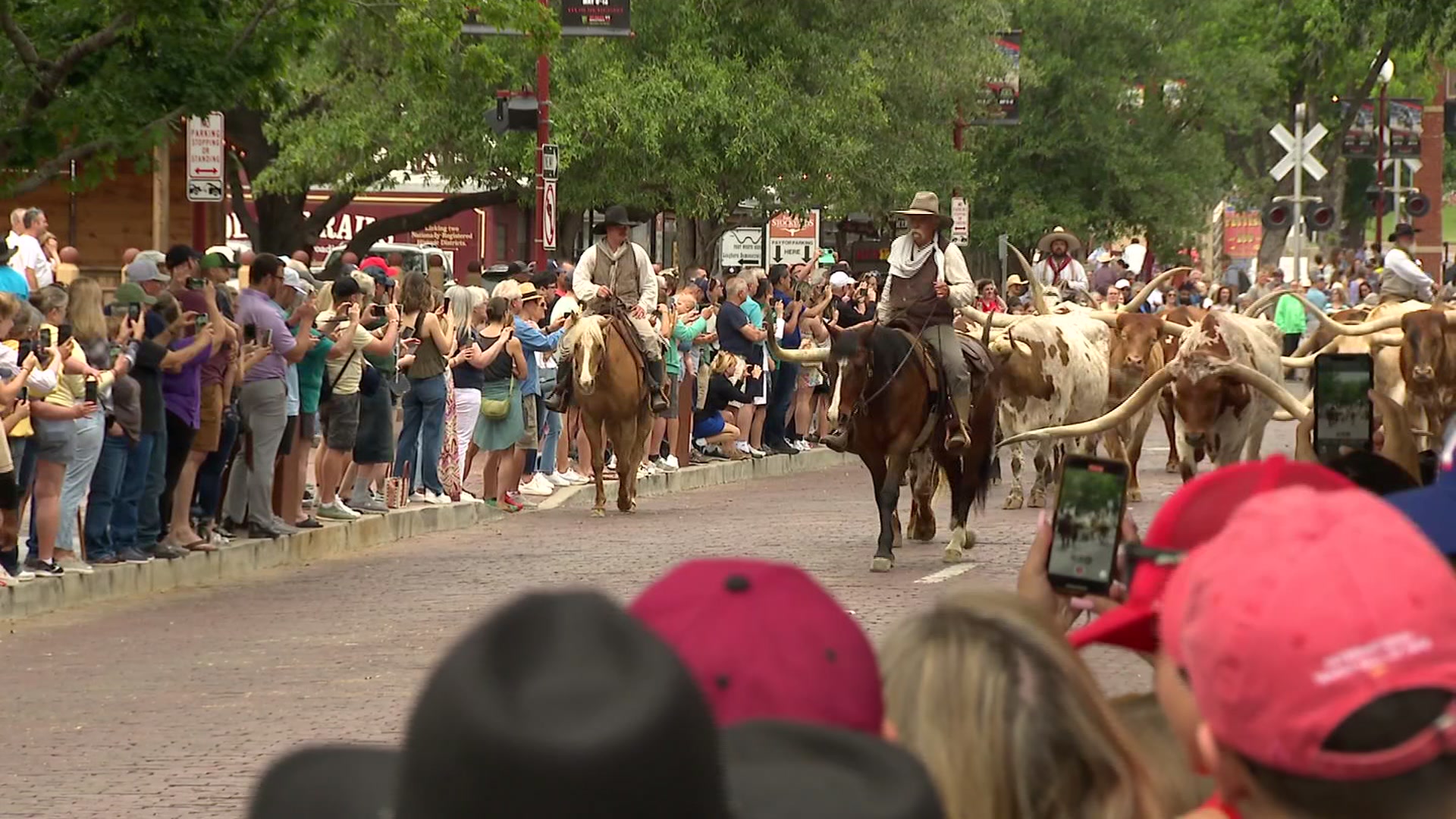
With 91 works by 72 artists, Slip Zone: A New Look at Postwar Abstraction in the Americas and East Asia proves it is a small world after all. The exhibition at the Dallas Museum of Art is on view through July 10.
With works drawn from the museum’s collection and important loans from local private collections, the exhibition reexamines artists’ experimentation with materials, techniques and forms in the decades following the World War II. The exhibition focuses on postwar movements in East Asia, Latin America and the United States.
“What’s so special about this exhibition is that it’s bringing together two regions of the world that are usually not talked about together,” Dr. Vivian Li, The Lupe Murchison Curator of Contemporary Art and co-curator of this exhibition, said. “This is a great new narrative that we’re building and developing.”
A central theme of Slip Zone is how artists influences each other globally, whether they knew each other personally, formally or were aware of new developments through publication. “There was this great global network and exchange of ideas,” Dr. Anna Katherine Brodbeck, Hoffman Family Senior Curator of Contemporary and co-curator of this exhibition, said.
Get DFW local news, weather forecasts and entertainment stories to your inbox. Sign up for NBC DFW newsletters.
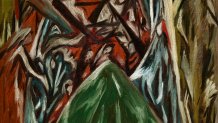
Jackson Pollock’s Figure Kneeling Before Arch with Sculls is paired with David Alfaro Siqueiros’s Crepuscúlo. Siqueiros introduced Pollock to the use of industrial paints in 1936. That use of material would inform Pollock’s use of nontraditional materials in his drip paintings.
The exhibition features several artists from the Osaka-based Gutal Art Association. The gallery “Destroying the Paintbrush” showcases the playfulness of these artists as they experimented with the creative process, turning the act of painting into a performance piece. “Many of these works are not about meticulous painting techniques,” Li said. “But letting materials be as they are, to activate the materials.”
The Scene
Shiro Shimamoto created Bottle Crash by throwing glass bottles filled with paint and rocks onto a canvas. Piece of glass and rock can be seen embedded in the painting. The work is the aftermath of Shimamoto’s bottle throwing performance.
In another gallery, Shimamoto’s Untitled – Whirlpool is paired with Lynda Benglis’ Odalisque (Hey,Hey Frankenthaler). Benglis created the vibrant work by using brightly colored paint to pigment rubber latex and pouring the materials directly on the floor. Similarly, Shimamoto poured several layers of paint onto the canvas and then removed paintbrushes acting as mediating tools so the viscous materials could determine the result of the work.
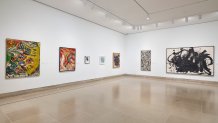
Pollock’s drip paintings at Tokyo’s 3rd Yomiuri Independent Exhibition in 1951 impressed Gutai’s leader, Jiro Yoshihara. Yoshihara appreciated Pollock’s distinctive technique. Pollock danced around the edge, flinging paint on the canvas until it was covered in drips and splatters.
Yoshihara proclaimed Pollock to be the best living artist in the United States. “It was not about copying Pollock or his technique. He found kinship in what Pollock was doing,” Li said.
Cathedral, one of Pollock’s first drip paintings, is paired with Kan’unchō, a work by Kazuo Shiraga. Shiraga dipped his feet into puddles of oil paint and slid across the canvas. He developed a rope system, allowing him to be suspended above the canvas so he could create more graceful movements.
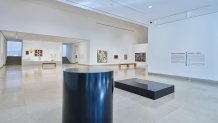
Outside the “Destroying the Paintbrush” gallery are two sculptural works that appear made from polished black material. At a second glance, tiny ripples give away the liquid nature of Phase of Nothingness by Nobuo Sekine. “If you look at it, at first it might look like a solid steel rectangle,” Li said. “But this was meticulously done by our installation crew for the last two days. It’s all full of water.”
The United States is represented by artists who pushed the optical and spatial effects of painting and sculpture, experimenting with new tools. Fred Eversley’s Untitled (parabolic lens) is inspired by his career in engineering and references the interplay between material, color and light as the viewer moves around the work.
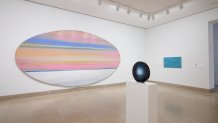
Ed Clark’s Intarsia reflects creative process using push brooms and his use of an elliptical shape is to mimic the shape of the eye. “He was one of the first US artists to make an irregularly shaped canvas in this mode and pin it directly to the wall as opposed to it being a framed rectilinear space,” Brodbeck said.
Slip Zone: A New Look at Postwar Abstraction in the Americas and East Asia is complemented with Bosco Sodi: La fuerzo del destino, a series of 30 sculptures in the Dallas Museum of Art’s sculpture garden.
Sodi crafts clay works by hand and then allows the pieces to sit in the environment for eight months before firing them. “You’re not really supposed to ever fire terracotta at this scale because it cracks and most people, if they are overly precious, don’t want that cracking. But he is very attracted to that feature,” Brodbeck said.
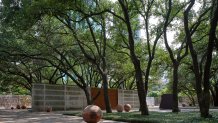
Marked by the artist and nature, the sculptures are scattered through the sculpture garden like breadcrumbs, leading visitors to discover the intersection between art and nature.
Learn more: https://dma.org/

